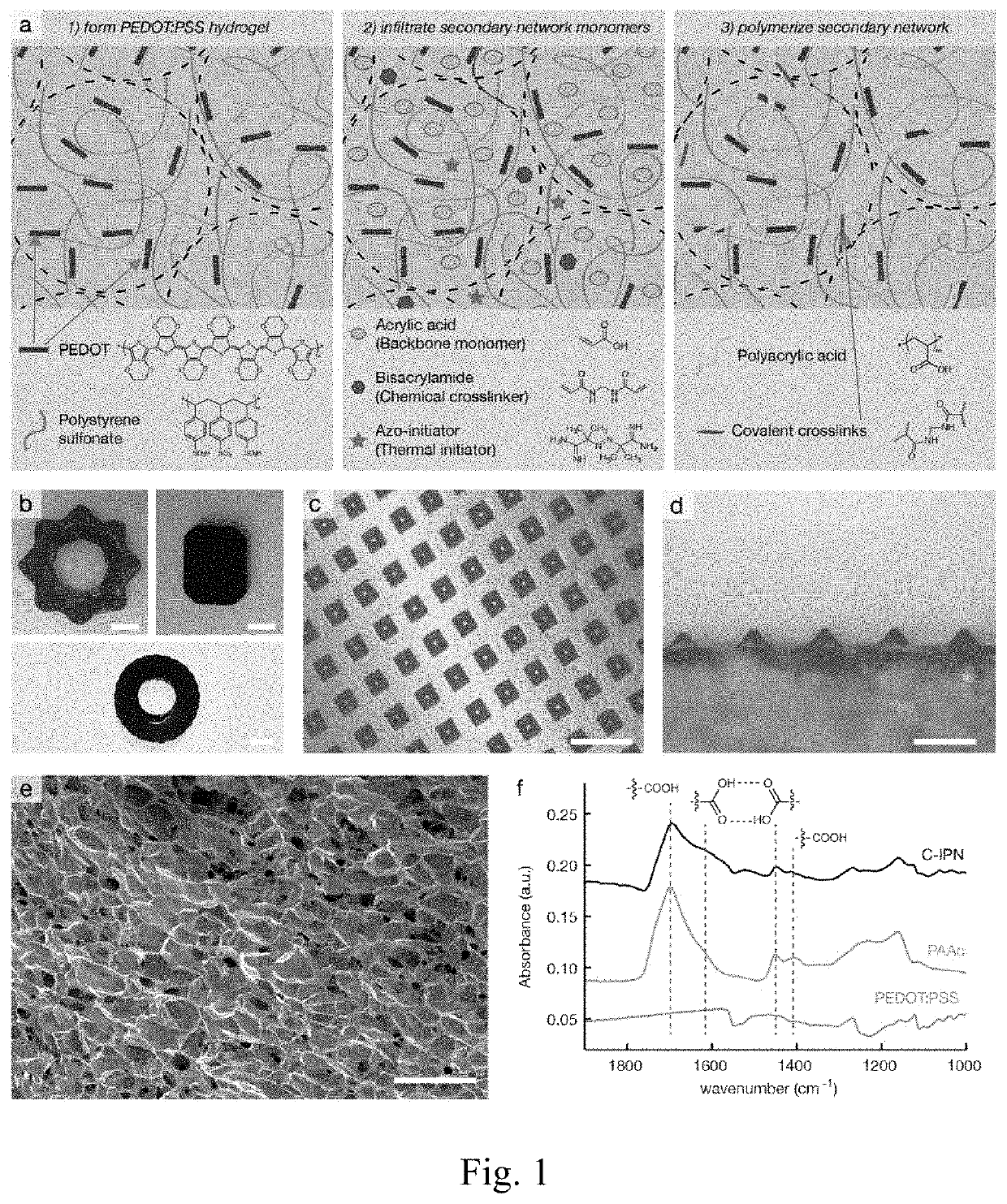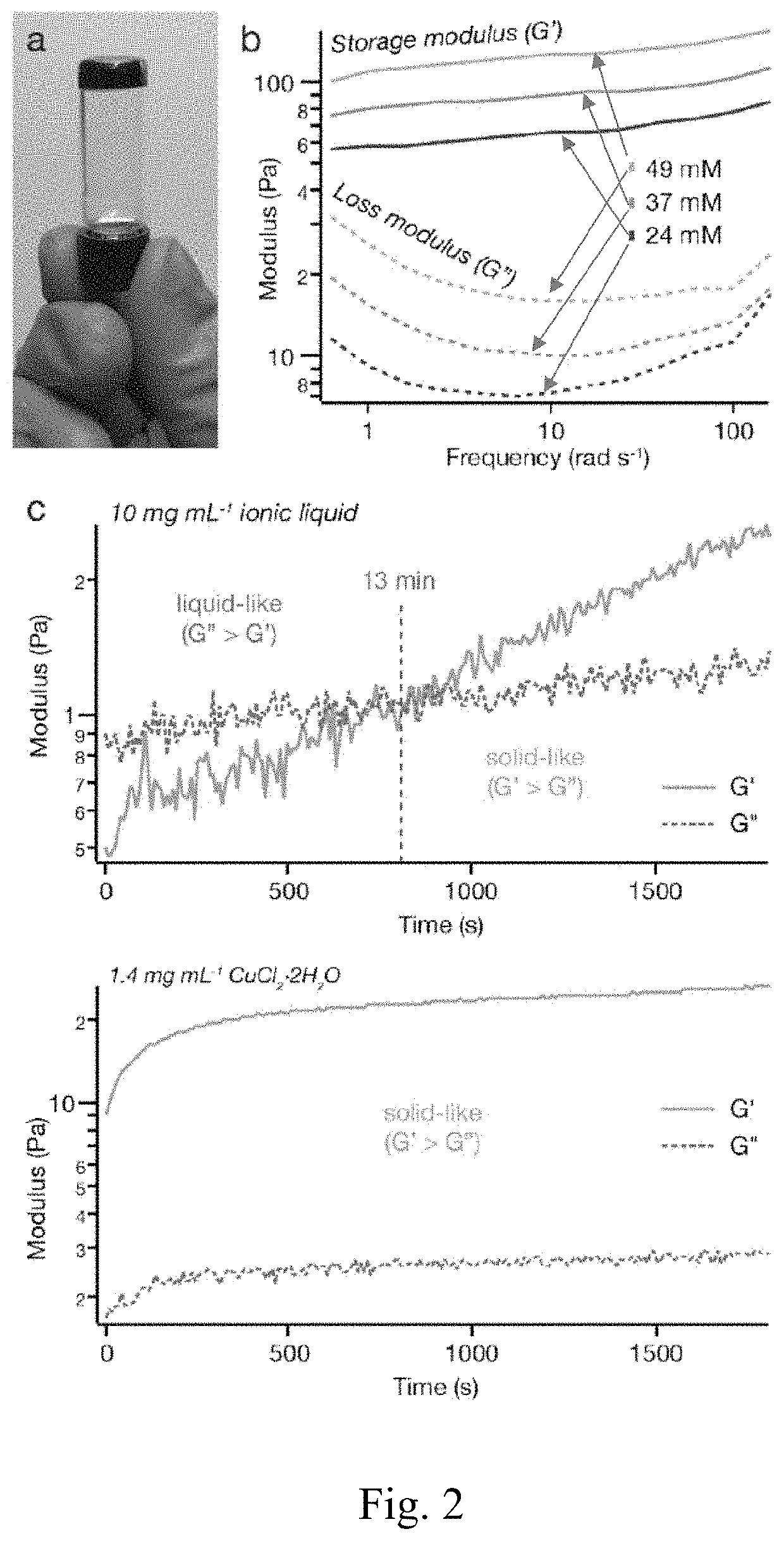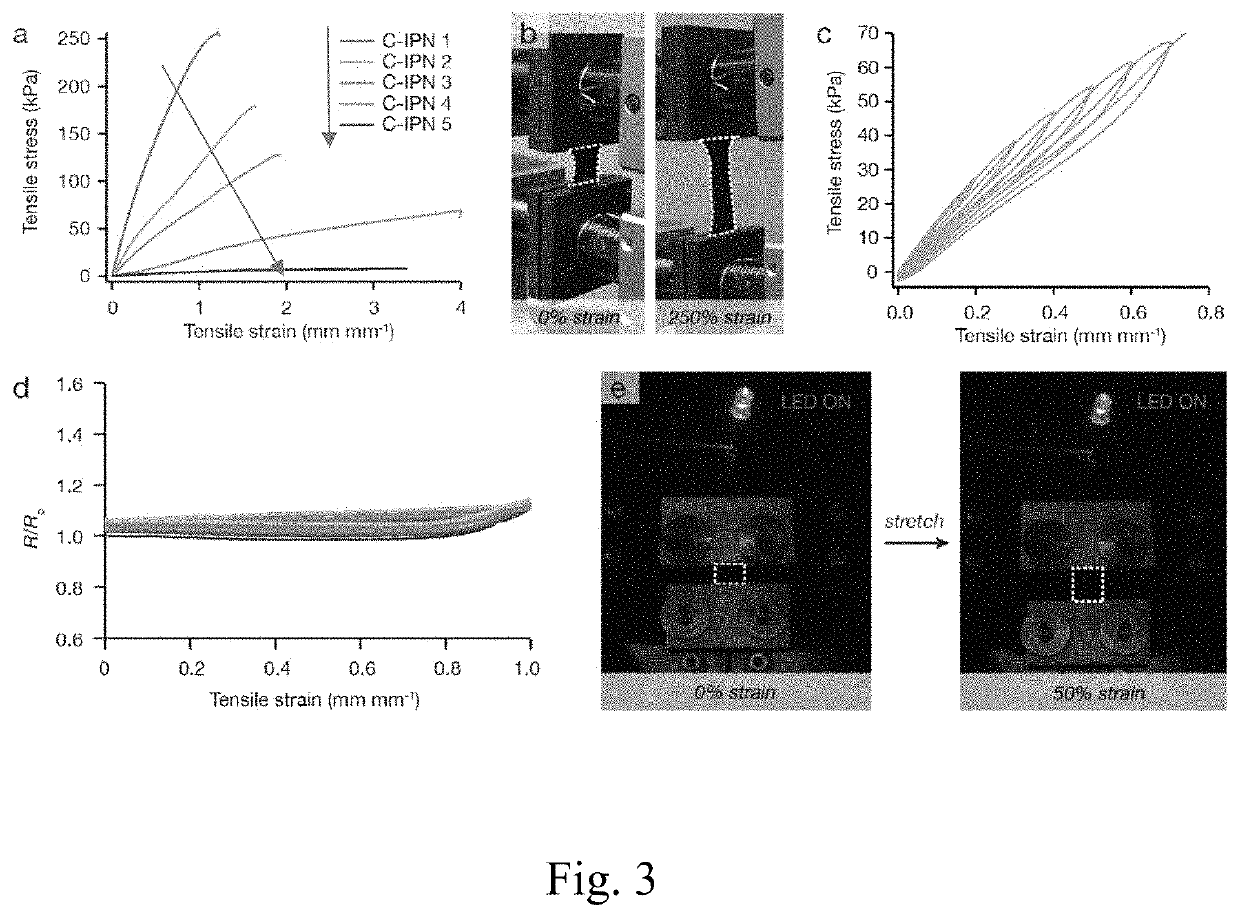Electrically conductive hydrogels with tunable properties
- Summary
- Abstract
- Description
- Claims
- Application Information
AI Technical Summary
Benefits of technology
Problems solved by technology
Method used
Image
Examples
example 1
Mechanically Tunable Conductive Interpenetrating Hydrogel Networks that Mimic the Elastic Moduli of Biological Tissue
[0061]Overview:
[0062]Conductive and stretchable materials that match the elastic moduli of biological tissue (about 0.5-500 kPa) are desired for enhanced interfacial and mechanical stability. Compared to inorganic and dry polymeric conductors, hydrogels made with conductive polymers are promising soft electrode materials due to their high water content. Nevertheless, most conductive polymer-based hydrogels sacrifice electronic performance to obtain usable mechanical properties. Here this example reports a method that overcomes this constraint using two interpenetrating hydrogel networks, one of which is formed by the gelation of the conductive polymer poly(3,4-ethylenedioxythiophene):poly(styrenesulfonate) (PEDOT:PSS). Due to the connectivity of the PEDOT:PSS network, conductivities up to about 23 S m−1 are achieved, a record for stretchable PEDOT:PSS-based hydrogels....
example 2
Electrochemical Gelation Method for Patterning Conductive Hydrogels with Tissue-Level Softness
[0104]Overview:
[0105]Conductive materials that match the elastic moduli of biological tissue (about 0.5-500 kPa) are desired to provide long-term interfaces between electronics and biological systems, which are desired for a wide range of applications, including neural recording and brain-machine interfaces for prosthetics. Hydrogels made from the conductive polymer poly(3,4-ethylenedioxythiophene):poly(styrenesulfonate) (PEDOT:PSS) are a desirable platform from which to fabricate conductive materials with tissue-level softness and readily tunable mechanical properties like high stretchability and elasticity. Despite these excellent properties, the ability to pattern PEDOT:PSS hydrogels is still desired to allow their integration with multi-functional and multi-channel bioelectronic devices. In this example, an improved electrochemical gelation (“electro-gelation”) method is presented for r...
PUM
| Property | Measurement | Unit |
|---|---|---|
| Electrical conductivity | aaaaa | aaaaa |
| Electrical conductivity | aaaaa | aaaaa |
| Tensile strain | aaaaa | aaaaa |
Abstract
Description
Claims
Application Information
 Login to View More
Login to View More - R&D
- Intellectual Property
- Life Sciences
- Materials
- Tech Scout
- Unparalleled Data Quality
- Higher Quality Content
- 60% Fewer Hallucinations
Browse by: Latest US Patents, China's latest patents, Technical Efficacy Thesaurus, Application Domain, Technology Topic, Popular Technical Reports.
© 2025 PatSnap. All rights reserved.Legal|Privacy policy|Modern Slavery Act Transparency Statement|Sitemap|About US| Contact US: help@patsnap.com



